simple yoga poses
Table of Contents
simple yoga poses
Start your yoga journey with these poses! 🧘♀️🧘♂️- Mountain 🏔️ – Stand tall
- Downward Dog 🐕 – Inverted V
- Child’s Pose 🧸 – Restful fold
- Warrior I ⚔️ – Strong stance
- Tree 🌳 – Balance on one leg
- Cat-Cow 🐱🐄 – Spine flow
- Forward Bend 🙇 – Stretch forward
- Bridge 🌉 – Lift hips
- Cobra 🐍 – Chest up
- Corpse 🛌 – Total relax
simple yoga poses
Here are expanded descriptions, including additional details on how to perform each pose, the benefits, and modifications for beginners or those needing extra support: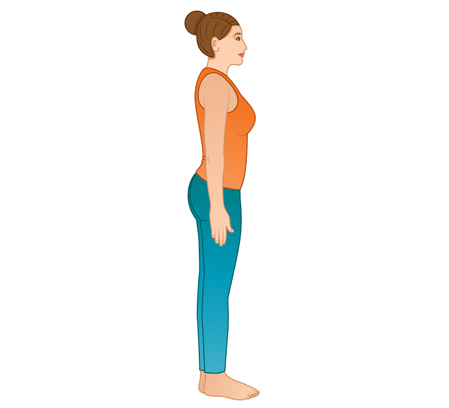
Mountain Pose | Basic yoga poses, simple yoga poses
1. Mountain Pose (Tadasana)
- Instructions:
- Stand with your feet together, big toes touching, and heels slightly apart. If this feels uncomfortable, keep your feet hip-width apart.
- Distribute your weight evenly through both feet, feeling grounded.
- Engage your thigh muscles, lift your kneecaps, but avoid locking your knees.
- Lift your chest, broaden your collarbones, and let your shoulder blades slide down your back.
- Let your arms hang naturally at your sides with palms facing forward or keep them slightly active by spreading your fingers.
- Lengthen your spine by lifting the crown of your head towards the ceiling and keep your chin parallel to the floor.
- Breathe deeply and steadily, feeling the connection with the ground.
- Benefits: Improves posture, strengthens thighs, knees, and ankles, increases awareness of body alignment, promotes a sense of grounding and stability.
- Modifications: Practice with your back against a wall for better alignment or use a yoga block between your thighs to engage your leg muscles.
- Visualization: Imagine standing tall and grounded like a mountain.

Downward Facing Dog | simple yoga poses
2. Downward Facing Dog (Adho Mukha Svanasana)
- Instructions:
- Start on your hands and knees, with your wrists aligned under your shoulders and knees under your hips.
- Spread your fingers wide and press firmly into your hands, especially the index finger and thumb.
- Tuck your toes under and lift your hips towards the ceiling, straightening your legs as much as comfortable.
- Press your heels towards the floor (they don’t have to touch the ground).
- Keep your head between your upper arms, ears aligned with your upper arms.
- Lengthen your spine, lift your sit bones high, and relax your neck.
- Hold the pose and take deep breaths.
- Benefits: Stretches the shoulders, hamstrings, calves, and hands, strengthens the arms and legs, improves circulation, relieves tension and stress.
- Modifications: Bend your knees slightly if your hamstrings are tight or place your hands on blocks to reduce the strain on your wrists.
- Visualization: Imagine forming an inverted V shape with your body.
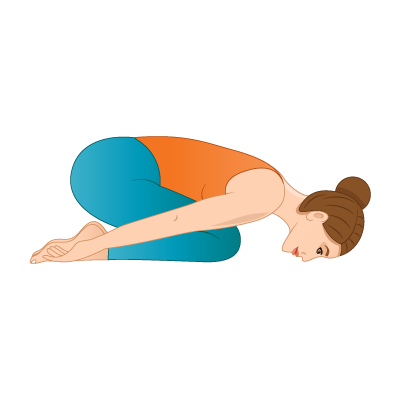
Child Pose | simple yoga poses | Yoga Pose
3. Child’s Pose (Balasana)
- Instructions:
- Kneel on the floor, touch your big toes together, and sit back on your heels.
- Separate your knees about hip-width apart (or wider if more comfortable).
- Exhale and bend forward, extending your arms in front of you on the floor or alongside your body.
- Rest your forehead on the mat or on a block for support.
- Breathe deeply and relax your entire body.
- Benefits: Gently stretches the hips, thighs, and ankles, relaxes the back and neck, calms the mind and relieves stress.
- Modifications: Place a folded blanket or bolster between your thighs and calves for extra support, or rest your forehead on a block or cushion.
- Visualization: Imagine yourself as a child resting, feeling safe and relaxed.
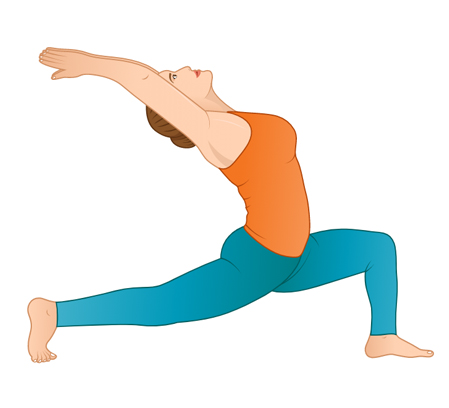
Yoga Pose: Warrior I | simple yoga poses
4. Warrior I (Virabhadrasana I)
- Instructions:
- Stand with your feet hip-width apart, then step your right foot back about 3-4 feet, keeping your left foot facing forward.
- Turn your right foot out slightly (about 45 degrees) and bend your left knee over your left ankle, aligning the knee with the middle toes.
- Square your hips towards the front of the mat.
- Raise your arms overhead, palms facing each other or touching, keeping your shoulders relaxed.
- Hold the pose, feeling the stretch in your hips and legs, then repeat on the other side.
- Benefits: Strengthens legs, opens hips and chest, stretches arms and legs, improves focus and balance.
- Modifications: Shorten your stance if you have tight hips, or practice with your back heel against a wall for better balance.
- Visualization: Imagine standing strong and tall like a warrior.
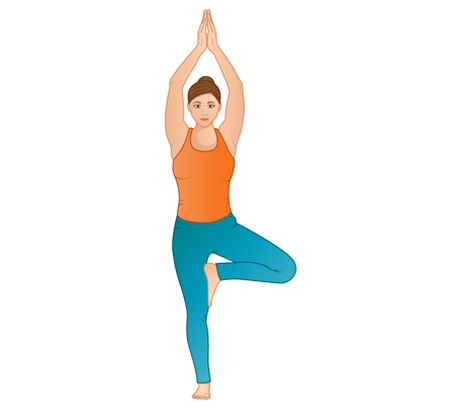
Yoga Pose: Tree Pose | simple yoga poses
5. Tree Pose (Vrksasana)
- Instructions:
- Stand on your left leg, then lift your right foot, placing the sole against your inner left thigh or calf (avoid the knee joint).
- Bring your hands to a prayer position in front of your chest, pressing your palms together.
- Fix your gaze on a point in front of you for balance.
- For an added challenge, raise your arms overhead with palms touching or keep them shoulder-width apart.
- Hold the pose, then repeat on the other side.
- Benefits: Improves balance and stability, strengthens thighs, calves, and ankles, promotes concentration and mental clarity.
- Modifications: Place your foot on your inner ankle with toes touching the floor if you need more stability, or practice near a wall for support.
- Visualization: Imagine being a sturdy tree with deep roots and a calm, steady presence.
top 10 yoga for mental health and stress managementtop-10-yoga-for-mental-health-and-stress-management
12 yoga poses that can improve concentration power12-yoga-poses-that-can-improve-concentration-power
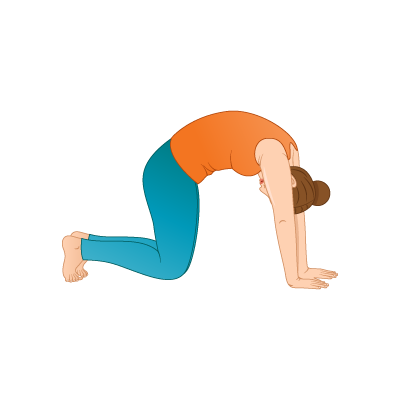
Cat-Cow Stretch | simple yoga poses

6. Cat-Cow Stretch (Marjaryasana-Bitilasana)
- Instructions:
- Start on your hands and knees with wrists under shoulders and knees under hips.
- For Cow Pose (Bitilasana), inhale, arch your back, drop your belly towards the mat, and lift your head and tailbone towards the ceiling.
- For Cat Pose (Marjaryasana), exhale, round your spine towards the ceiling, tuck your chin to your chest, and draw your belly in.
- Continue to alternate between Cat and Cow with each breath, moving slowly and mindfully.
- Benefits: Stretches the back and neck, improves flexibility of the spine, massages internal organs, helps to relieve stress and tension.
- Modifications: Place a folded blanket under your knees for extra cushioning.
- Visualization: Imagine the fluid movement of a cat stretching and a cow relaxing.
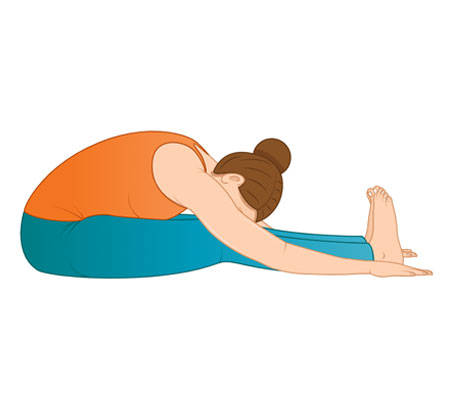
Yoga Pose: Seated | simple yoga poses
7. Seated Forward Bend (Paschimottanasana)
- Instructions:
- Sit with your legs extended straight in front of you, feet flexed.
- Inhale, lengthen your spine, and reach your arms overhead.
- Exhale, hinge at your hips, and fold forward, reaching for your feet, shins, or ankles.
- Keep your spine long and avoid rounding your back.
- Hold the pose, breathing deeply and relaxing with each exhale.
- Benefits: Stretches the spine, shoulders, hamstrings, calms the mind, relieves stress, improves digestion.
- Modifications: Sit on a folded blanket or cushion to elevate your hips, or use a strap around your feet to assist in the forward bend.
- Visualization: Imagine gently stretching forward like a calm, flowing river.
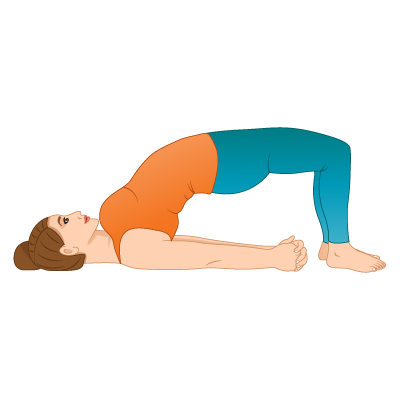
Yoga Pose: Bridge Pose | simple yoga poses
8. Bridge Pose (Setu Bandhasana)
- Instructions:
- Lie on your back with your knees bent and feet hip-width apart, close to your glutes.
- Press into your feet and lift your hips towards the ceiling, keeping your thighs and feet parallel.
- Clasp your hands under your back and press your arms into the mat, lifting your chest.
- Keep your neck relaxed and your gaze towards the ceiling.
- Hold the pose and breathe deeply.
- Benefits: Strengthens the back, glutes, and hamstrings, opens the chest and shoulders, improves digestion and stimulates the thyroid.
- Modifications: Place a block under your sacrum for a supported bridge, or keep your hands at your sides for less intensity.
- Visualization: Imagine forming a strong, supportive bridge.

Yoga Pose: Cobra Pose | simple yoga poses
9. Cobra Pose (Bhujangasana)
- Instructions:
- Lie on your stomach with your legs extended back, tops of your feet on the mat.
- Place your hands under your shoulders, elbows close to your body.
- Press into your hands to lift your chest off the floor, using your back muscles.
- Keep your elbows slightly bent and close to your body, lifting your chest higher with each inhale.
- Hold the pose, keeping your neck long and shoulders away from your ears.
- Benefits: Strengthens the spine, stretches the chest, shoulders, and abdomen, opens the heart and lungs, helps relieve stress.
- Modifications: Keep your elbows bent and lift only a few inches off the floor if you have lower back issues, or place a folded blanket under your pelvis for support.
- Visualization: Imagine a cobra rising, strong and alert.
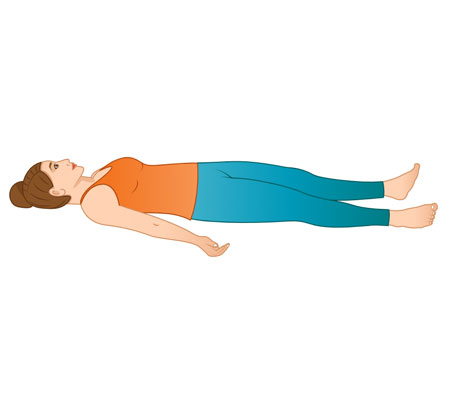
Corpse Pose (Savasana) | simple yoga poses
10. Corpse Pose (Savasana)
- Instructions:
- Lie flat on your back with your legs comfortably apart and arms at your sides, palms facing up.
- Close your eyes and relax your entire body, letting go of any tension.
- Breathe naturally and deeply, focusing on the rise and fall of your belly.
- Stay in the pose for several minutes, allowing your body to rest and your mind to calm.
- Benefits: Promotes relaxation and stress relief, calms the mind, reduces fatigue and anxiety, helps lower blood pressure.
- Modifications: Place a rolled blanket under your knees for lower back support or cover yourself with a blanket to stay warm.
- Visualization: Imagine complete relaxation and surrender, feeling at peace and rejuvenated.
What yoga has 26 poses? What are the 12 asanas? What are the 4 original yoga poses? Which is the best yoga pose? What are the 6 major types of yoga? What is the 90 degree yoga pose called?
Post Views: 91






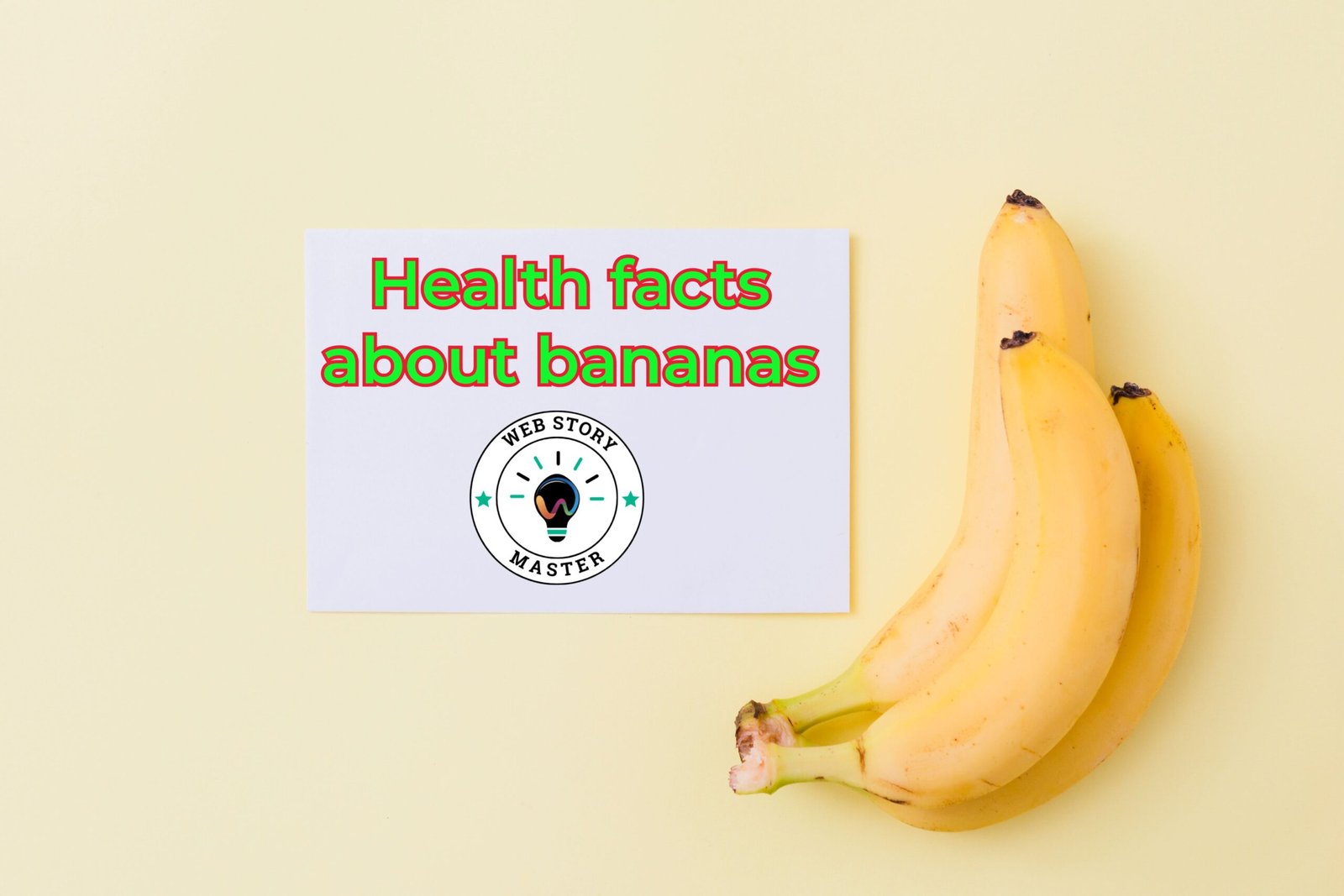


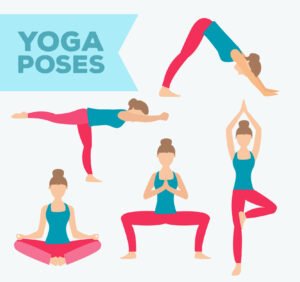








Post Comment